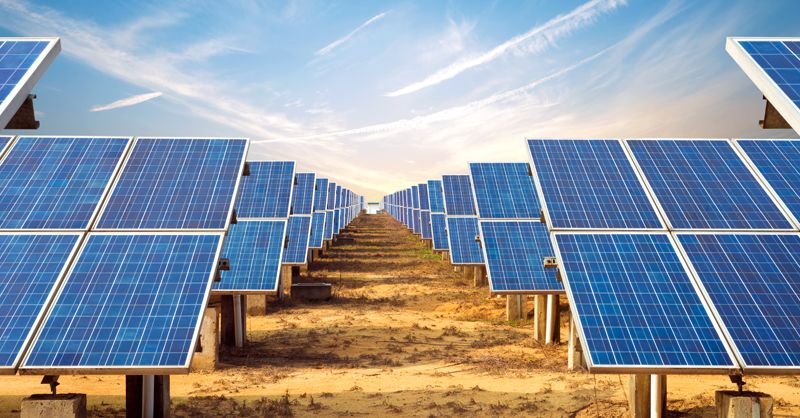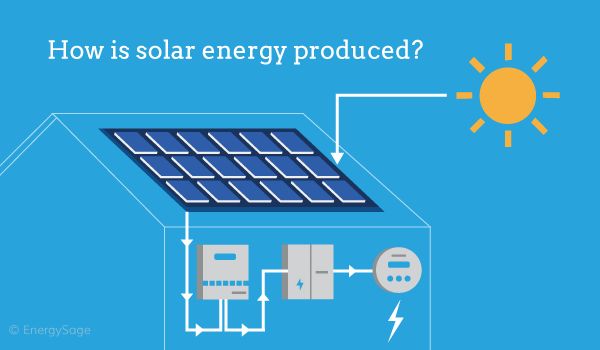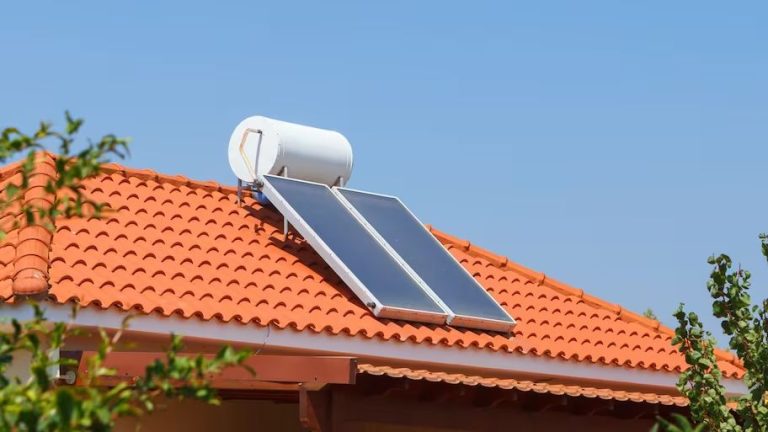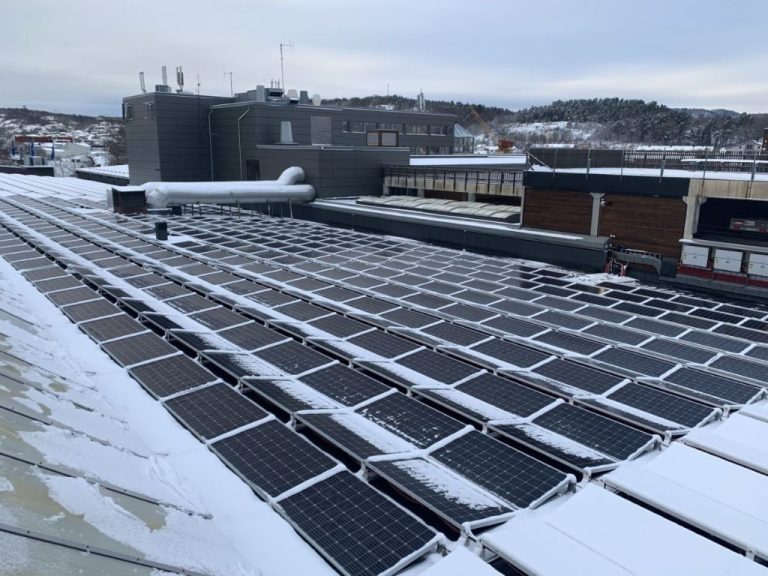Is Renewable Energy Or Solar?
Defining Renewable Energy

Renewable energy is energy that comes from naturally replenished resources, such as sunlight, wind, rain, tides, waves, and geothermal heat (https://www.nationalgeographic.org/article/renewable-energy-explained/). The key aspect of renewable energy is that it can be continually replenished in a short time period through natural processes.
There are several major types of renewable energy sources:
- Solar energy – Energy from the sun that is captured through solar panels or concentrated solar power plants.
- Wind energy – Energy captured through large wind turbines that convert the kinetic energy of wind into electrical power.
- Geothermal energy – Energy generated from heat stored beneath the Earth’s surface that can produce steam to turn turbines and generate electricity.
- Hydroelectric power – Energy generated by flowing water that turns turbines connected to generators.
- Biomass energy – Energy generated through burning organic matter such as wood, agricultural waste, or converting it to a gas through processes like anaerobic digestion.
In contrast to fossil fuels like coal, oil, and natural gas, renewable energy sources regenerate and cannot be depleted. This makes renewable energy a sustainable long-term energy solution (https://www.prysmiangroup.com/en/insight/sustainability/renewable-energy-definition-and-types-of-clean-energy).
Solar Energy Overview
Solar energy is the conversion of the sun’s radiation into useful forms of energy, such as heat and electricity. There are two main technologies for converting solar energy: photovoltaics (PV) and concentrated solar power (CSP) (Britannica, 2022).
Photovoltaics, often simply called solar cells, convert sunlight directly into electricity. They are made of semiconducting materials that absorb photons from sunlight and release electrons, generating an electric current. Arrays of solar cells are combined together in modules and panels to generate power. Photovoltaic systems can range from small rooftop systems to massive solar farms (Microsoft, 2022).
Concentrated solar power (CSP) systems use lenses or mirrors to concentrate sunlight that heats a fluid, producing steam to drive an electrical turbine generator. CSP is also sometimes known as solar thermal energy. There are different CSP technologies, including parabolic troughs, linear Fresnel reflectors, power towers, and dish engines (Britannica, 2022).
Solar design in architecture, also known as solar architecture, refers to designing buildings to utilize sunlight and solar energy through features such as large south-facing windows, trombe walls, and solar water heating systems (Microsoft, 2022).
Growth of Renewable Energy
Renewable energy adoption has grown substantially in recent years, driven by favorable economics and policy support. According to research from Engineerinc, global renewable energy consumption increased over 500% between 2000-2020 (Source). Powersetter notes that the lower cost of renewable energy compared to conventional sources is a key factor enabling this growth. The levelized cost of electricity from solar PV and wind declined 89% and 70% respectively from 2009-2020, making renewables more cost-competitive (Source). Utilities One points to green building certifications as another driver, with over 3.6 billion square feet of commercial space now LEED certified in the United States. Green buildings are designed to maximize energy efficiency and renewable energy usage (Source).
Growth of Solar Energy
The growth of solar energy capacity has been remarkable in recent years. According to the Solar Energy Industries Association (SEIA), total installed solar capacity in the United States has grown from 1.2 gigawatts in 2008 to over 100 gigawatts in 2021, an over 80 fold increase [1]. Rapid declines in solar panel costs, as well as improvements in efficiency, have made solar power cost competitive with fossil fuels in many parts of the world [2].
One analysis projects the growth rate of solar capacity in the US will continue at 32.4 gigawatts per year over the next decade [3]. As costs fall further and energy storage improves, solar is expected to become an increasingly significant contributor to electricity generation globally.
Contribution of Solar to Renewables
Solar energy makes up a significant portion of renewable energy production globally. In 2021, solar accounted for over 3% of total global electricity generation and around 22% of electricity from renewable sources.1 The contribution of solar to renewable electricity generation varies by region, but is increasing overall as solar capacity expands rapidly around the world.
The countries with the highest share of solar in their renewable energy mix include Honduras (65%), Italy (24%), Germany (23%), Greece (23%) and Australia (19%).1 As the costs of solar continue to decrease, its contribution to renewables is projected to grow substantially in the coming decades.
However, intermittency and variability of solar generation remains a challenge. Areas with high solar penetration need energy storage, demand response and grid flexibility solutions to balance supply and demand. But with supportive policies and rapid technology advances, solar is poised to become the number one source of renewable electricity globally within the next few years.
Challenges of Solar Energy
Solar energy faces several key challenges that limit its growth and adoption. Three major challenges are intermittency, storage, and land use.
Intermittency refers to the fact that solar energy production depends on sunny weather and daylight hours (Source). Solar panels do not generate electricity at night or on cloudy days, which can make solar an unreliable energy source.
The intermittent nature of solar poses difficulties for storage and grid integration. Effective storage solutions are needed to capture surplus solar energy during peak production and distribute it during non-productive times. But large-scale cost-effective storage remains elusive (Source).
Solar projects also require significant land area, raising concerns about land use conflicts with agriculture, ecosystems, and wildlife. The average solar installation requires around 1 acre per 3-4 megawatts of energy capacity. Large solar farms can cover thousands of acres of land (Source). Careful siting and land management practices are needed to minimize environmental impacts.
Other Renewable Sources
In addition to solar, there are several other major renewable energy sources that are growing in usage and importance (Renewable energy | Types, Advantages, & Facts).
Wind power harnesses the wind to spin large turbines that generate electricity. Wind is abundant, renewable, and produces no direct emissions. Wind power capacity and generation have grown rapidly in recent years. However, wind power can be inconsistent and only generates electricity when the wind blows within certain speeds (6 Types of Alternative Energy Resources & Examples).
Hydropower utilizes the movement of water to generate electricity, often through dams and turbines. It’s a mature technology that provides reliable baseload power. But sites with adequate water flow are geographically limited, and dams can disrupt local ecosystems (7 Types of Renewable Energy: The Future of Energy).
Geothermal energy taps into natural heat within the earth’s crust to produce steam and hot water that can drive turbines. It provides constant power and has a small footprint. However, sites with adequate geothermal resources are rare, and can be constrained by location (6 Types of Alternative Energy Resources & Examples).
Biomass converts organic matter like plants, wood, and waste into energy through combustion, digestion, or other processes. It can provide dispatchable power and pairs well with intermittent renewables. Drawbacks include feedstock limitations, logistics challenges, and air pollution concerns (7 Types of Renewable Energy: The Future of Energy).
Comparing Renewables
When analyzing different renewable energy sources, it is important to consider their complementary benefits and capacity factors. Solar and wind power can complement each other, as solar generates more electricity during the day when demand is high, while wind often blows stronger at night (Ranganathan, 2023). According to a study by Ranganathan (2023), hydropower has the highest capacity factor of the major renewable sources at around 52-56%, followed by geothermal at 74-89%. In contrast, solar PV has a capacity factor of 16-27% and wind ranges from 35-42%.
While solar and wind may have lower capacity factors, their fuel supply is free and unlimited. Geothermal depends on the availability of hydrothermal resources, and hydropower relies on precipitation patterns. Solar and wind farms also have low maintenance costs compared to hydropower plants and dams. Overall, a mix of complementary renewable sources is recommended to balance out intermittency challenges. Solar provides clean energy during peak daylight hours but depends on storage solutions after dark. Wind power ramps up more often at night and is highly location dependent. The optimal renewable energy system combines solar, wind, geothermal, and hydropower based on local resource availability and energy demand profiles (Ranganathan, 2023).
Future of Renewables
Many projections point to strong continued growth for renewable energy in the coming decades. According to Earth.org, solar energy capacity is predicted to increase 57% by 2024. The growth is driven by declining costs, with solar projected to become 35% cheaper by 2024.
Onshore wind capacity is also poised for major growth, with Nesfircroft predicting a 57% increase by 2024. Offshore wind in particular is rapidly expanding as the technology improves. Renewables are expected to continue taking market share away from fossil fuels as prices drop and storage solutions advance.
Many experts argue renewable energy will need to dominate future electricity generation in order to meet climate goals and limit global warming. Projections vary on the exact timeline, but most agree renewables will supply over 50% of electricity by 2050. Realizing these ambitious projections will require substantial investments and policy support globally.
Conclusion
The relationship between solar power and overall renewable energy is closely intertwined. As solar technology has improved and costs have declined dramatically in recent years, solar has emerged as a leading and rapidly growing contributor to renewable energy worldwide. Though other sources like wind and hydropower still play major roles, solar is becoming an increasingly significant part of the overall renewable energy mix.
Looking ahead, solar is poised for continued strong growth and is expected to maintain its position as a vital renewable energy source. Further advancements and innovations in solar technology along with improving economics will enable solar to supply an ever-greater share of renewables. While challenges remain, the future is bright for solar to lead the transition toward renewable energy and a more sustainable energy system overall.





